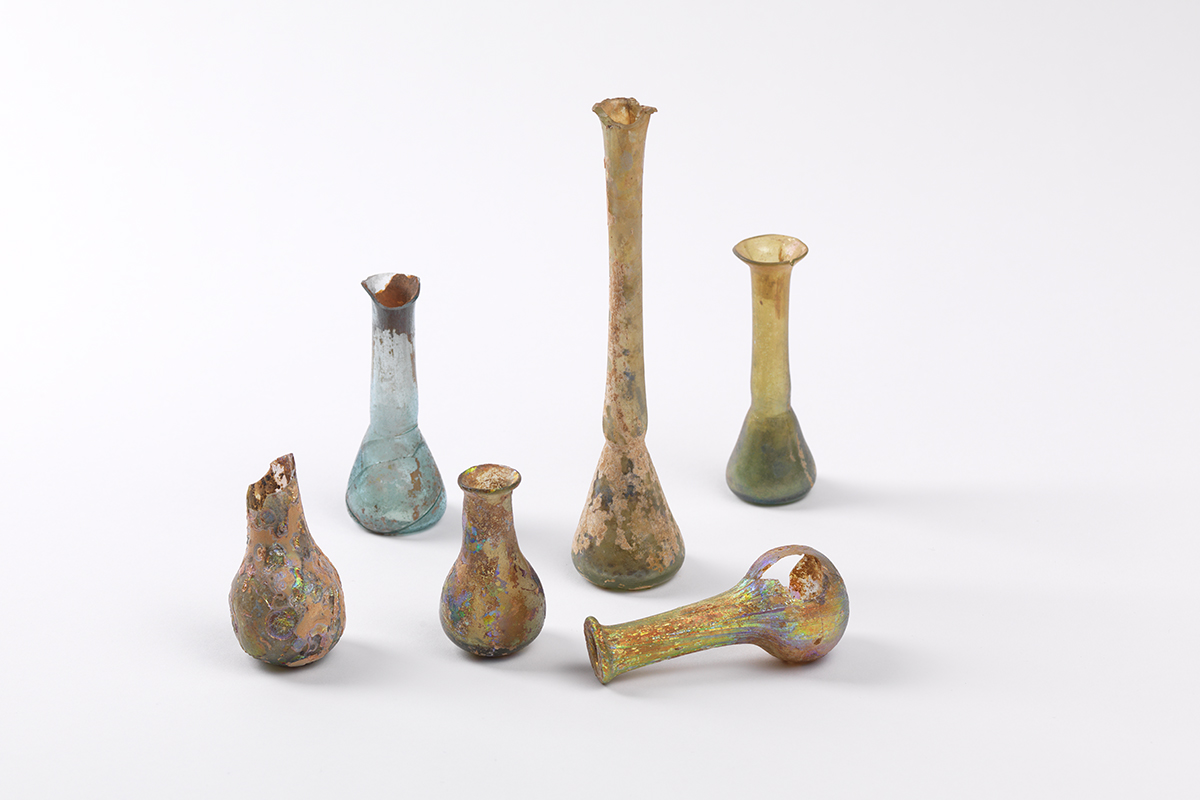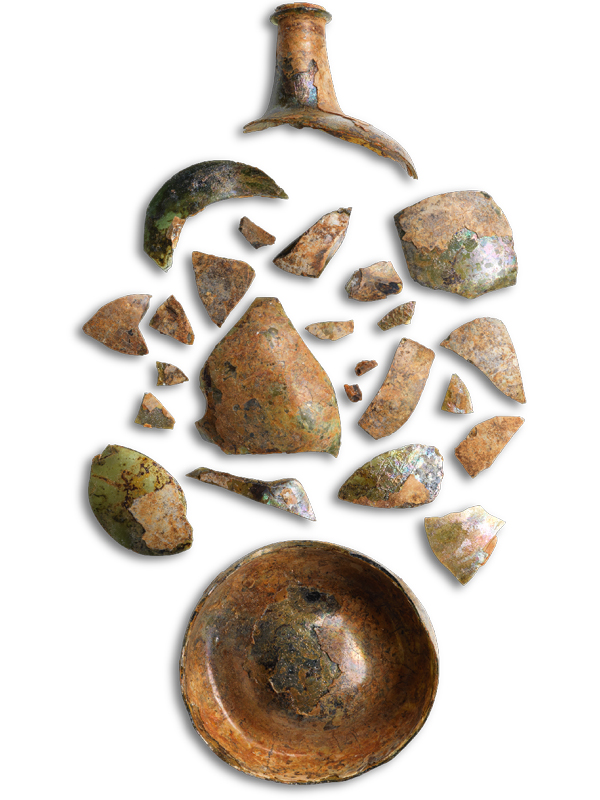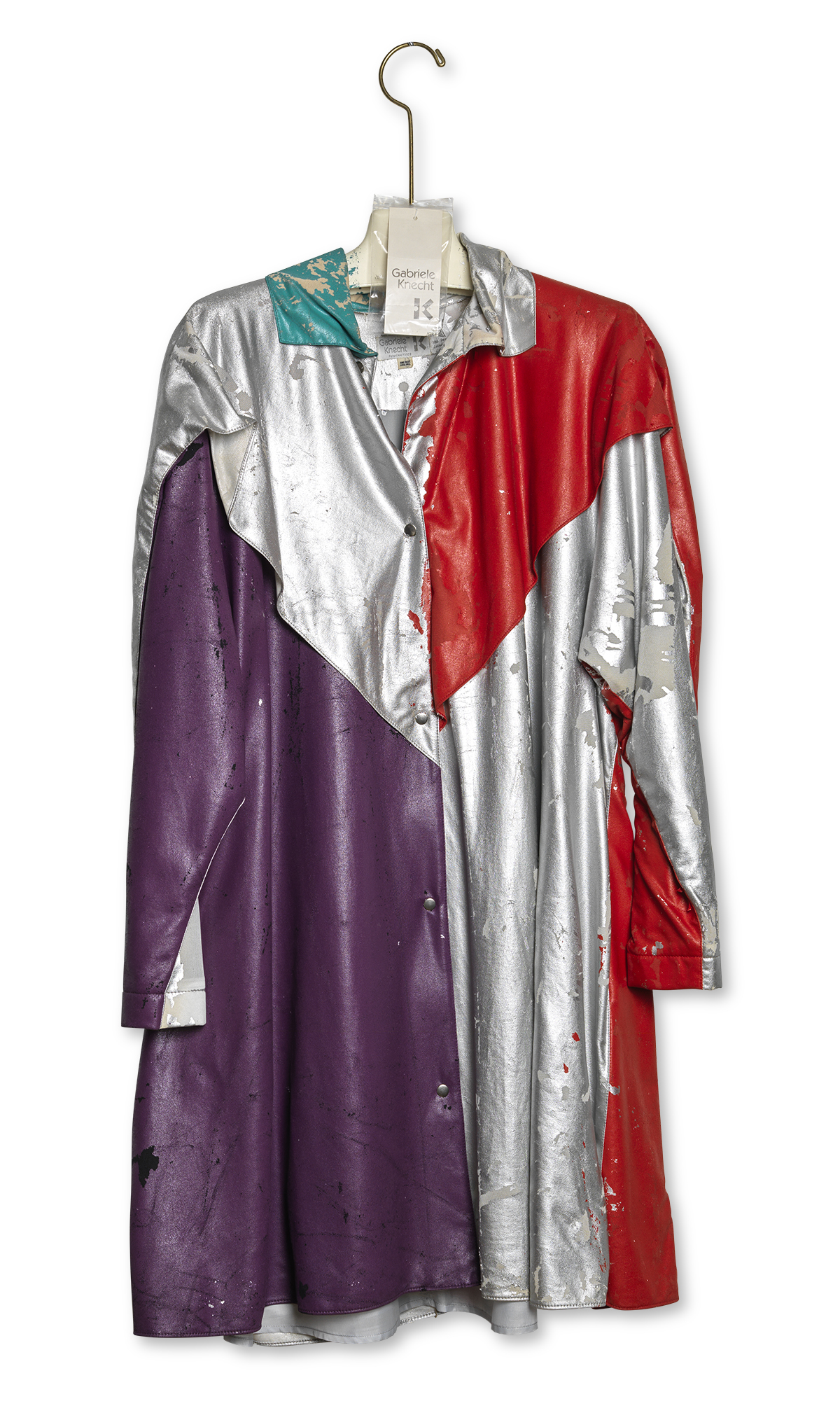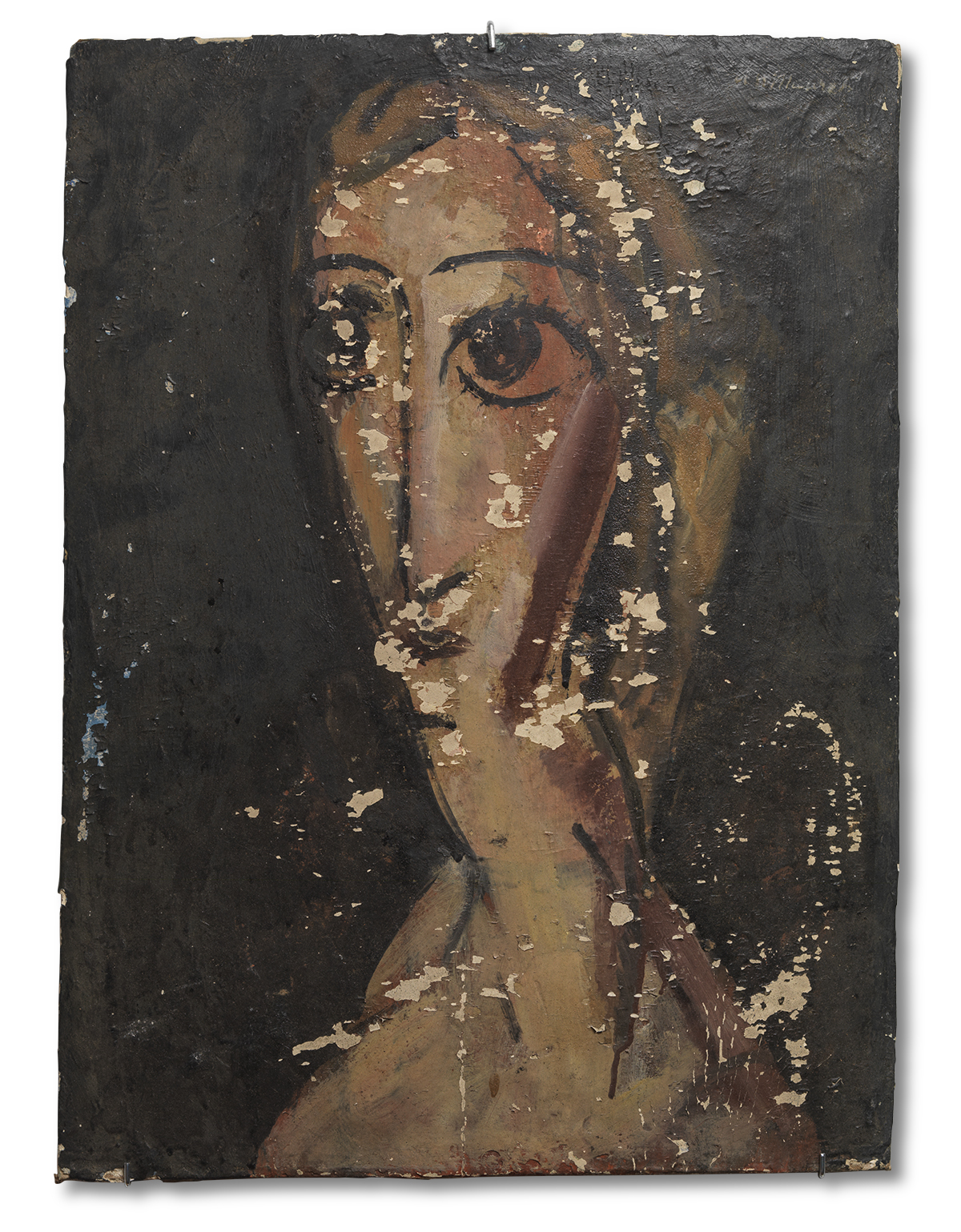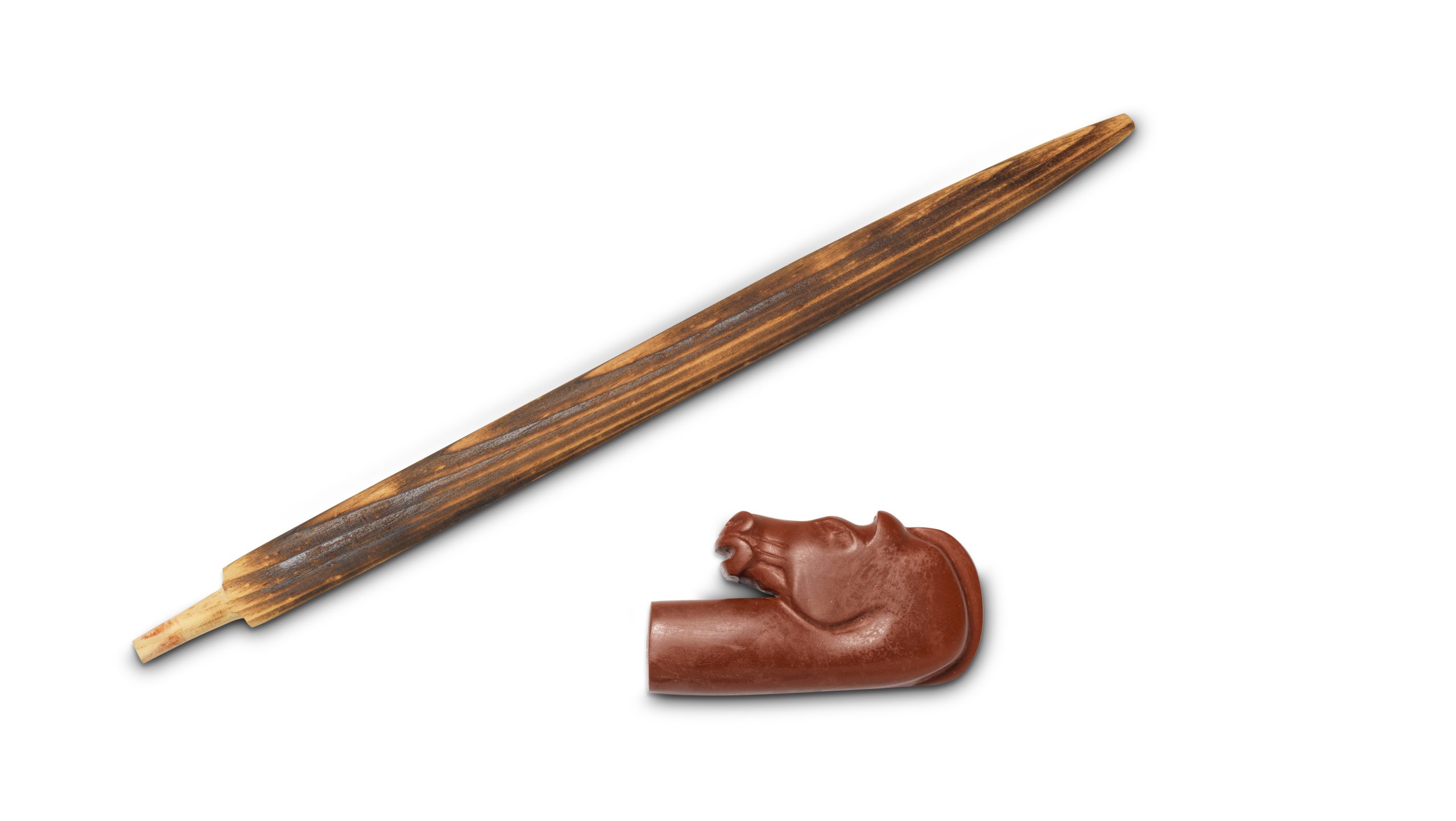Archaeological Glass
Unguentaria, 1st–2nd century CE
Unknown maker, Roman Empire
Glass, two: h. 2 in. (5.1 cm), diam. 1 1/2 in. (3.8 cm); one: h. 3 in. (7.6 cm), diam. 1 in. (2.5 cm); one: h. 3 in. (7.6 cm), diam. 1 1/4 in. (3.2 cm); one: h. 3 1/2 in. (8.9 cm), diam. 1 in. (2.5 cm); one: h. 5 in. (12.7 cm), diam. 1 in. (2.5 cm)
Courtesy the Conservation Center, Institute of Fine Arts, New York University, New York City
Mallet Bottle and Onion Bottle Sherds, ca. 1630–1740
Unknown maker, England
Glass, mallet bottle: h. 9 1/2 in. (24.1 cm), diam. 4 in. (10.2 cm); onion bottle neck: 3 3/4 × 4 x 3 in. (9.5 × 10.2 × 7.6 cm); sherds: 2 3/4 × 5 1/2 × 5 1/2 in. (7 × 14 × 14 cm)
New York City Archaeological Repository, the Nan A. Rothschild Research Center, SHB B25-K34-A, SHB 544-1088-gbn13_1, SHB 544-1088-bb12_1, and SHB 544-1088-bb12_2
Although these vessels were made at different times and in places far apart, they exhibit similar signs of glass deterioration. Glass is typically composed of a silica network containing ions that act as fluxes and stabilizers. When exposed to moisture for an extended period of time, alkali ions may leach out and form weathering crusts that appear iridescent. Such surfaces influenced glassmakers in the nineteenth and twentieth century in developing decorative glass.
Archaeologists discovered the mallet and onion bottles, used to hold liquor, here in Manhattan at the Stadt Huys Block archaeological site. The items were excavated from the basement of the Lovelace Tavern, a seventeenth- and eighteenth-century drinking establishment that once served as City Hall.
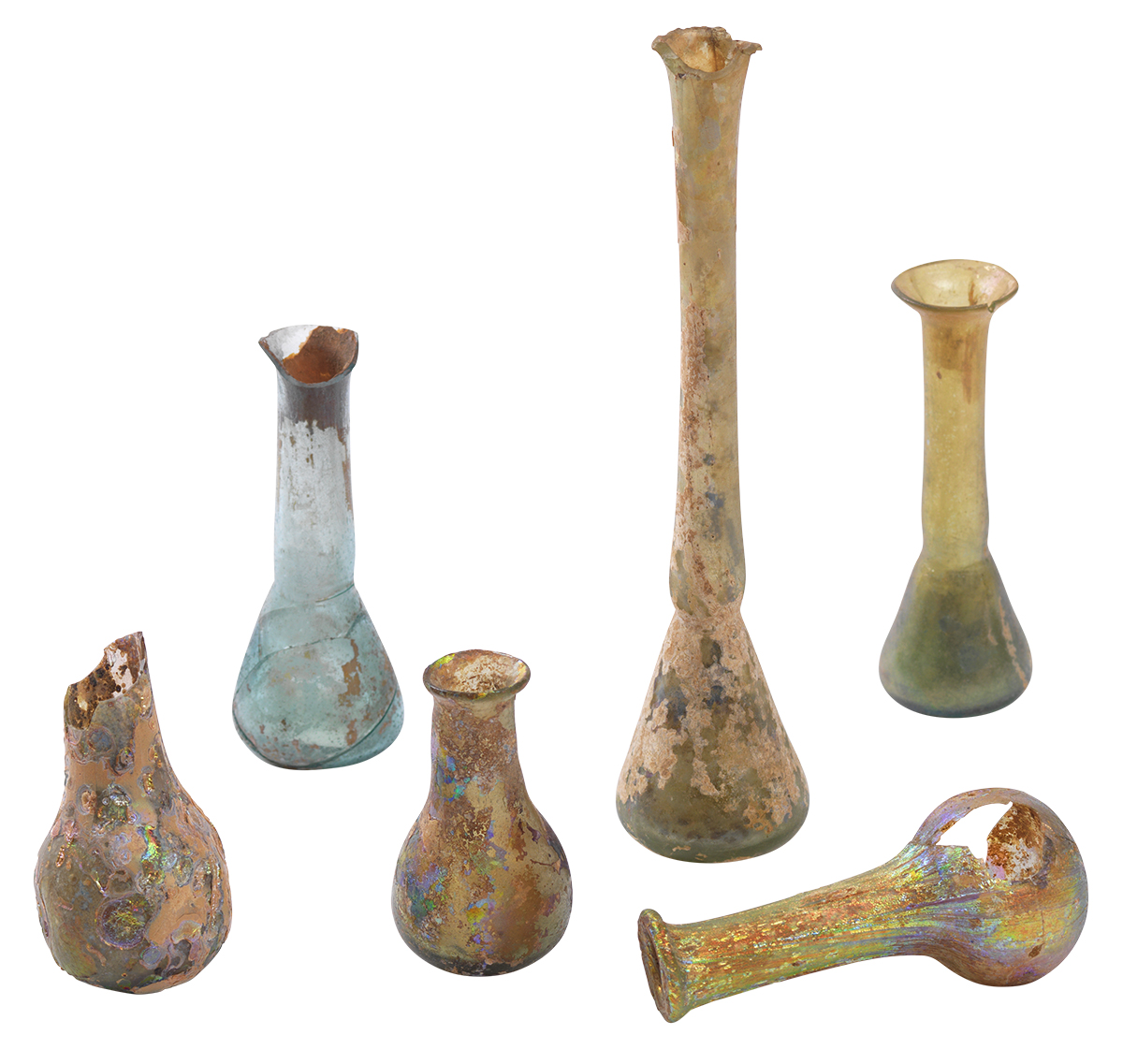
Click thumbnail images to view slideshow
See other items in How is Matter Active?


